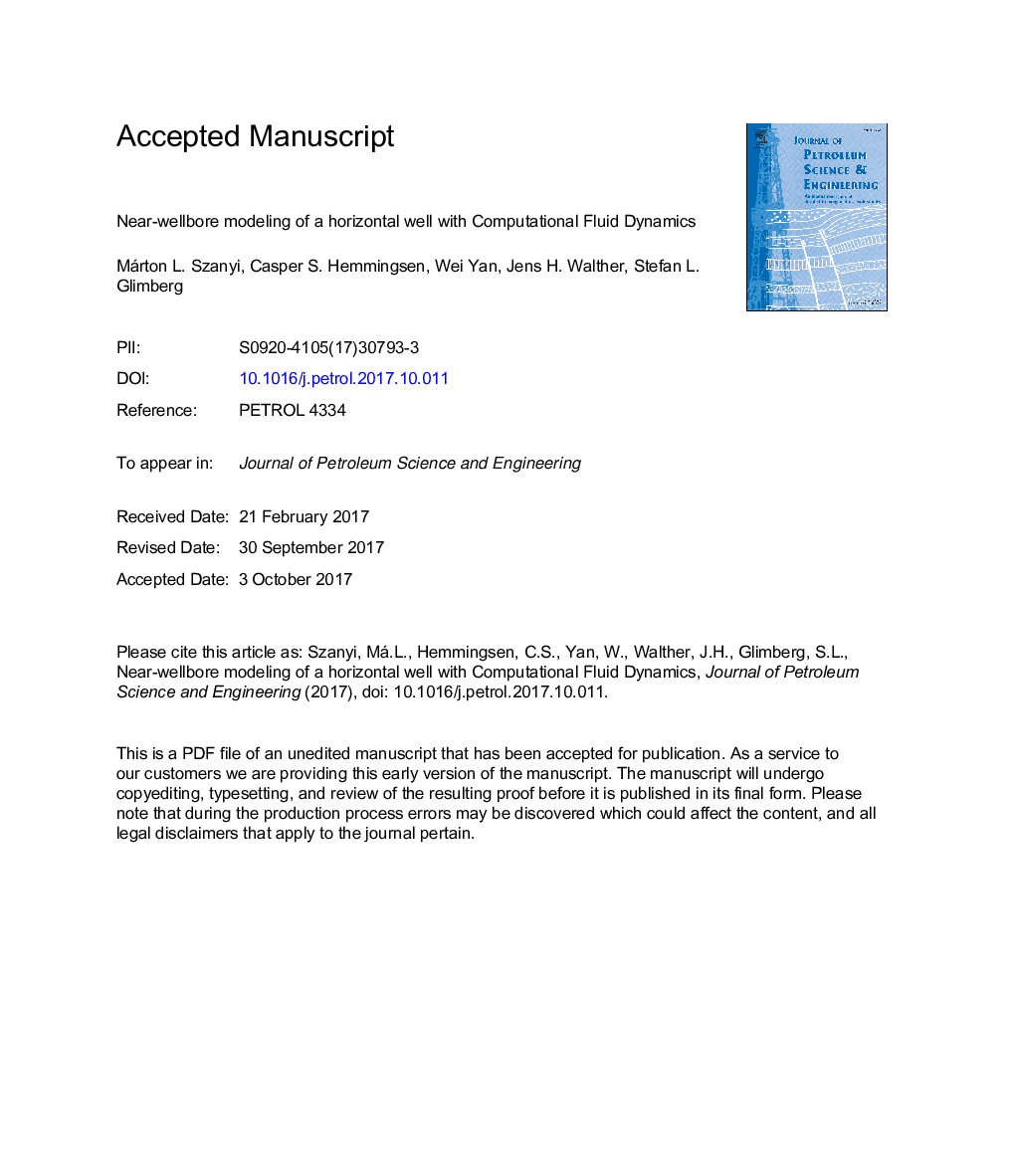| Article ID | Journal | Published Year | Pages | File Type |
|---|---|---|---|---|
| 8125466 | Journal of Petroleum Science and Engineering | 2018 | 14 Pages |
Abstract
The oil production by horizontal wells is a complex phenomenon that involves flow through the porous reservoir, completion interface and the well itself. Conventional reservoir simulators can hardly resolve the flow through the completion into the wellbore. On the contrary, Computational Fluid Dynamics (CFD) is capable of modeling the complex interaction between the creeping reservoir flow and turbulent well flow for single phases, while capturing both the completion geometry and formation damage. A series of single phase steady-state simulations are undertaken, using such fully coupled three dimensional numerical models, to predict the inflow to the well. The present study considers the applicability of CFD for near-wellbore modeling through benchmark cases with available analytical solutions. Moreover, single phase steady-state numerical investigations are performed on a specific perforated horizontal well producing from the Siri field, offshore Denmark. The performance of the well is investigated with an emphasis on the inflow profile and the productivity index for different formation damage scenarios. A considerable redistribution of the inflow profile were found when the filtrate invasion extended beyond the tip of the perforations.
Related Topics
Physical Sciences and Engineering
Earth and Planetary Sciences
Economic Geology
Authors
Márton L. Szanyi, Casper S. Hemmingsen, Wei Yan, Jens H. Walther, Stefan L. Glimberg,
